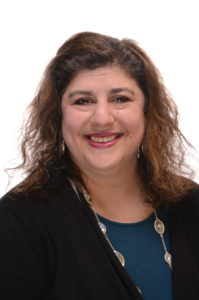By Jennifer Fiorillo
Mental Health

Jennifer Fiorillo
The May 24 school shooting in Uvalde, Texas was enough to make us all seriously question how and why these tragedies continue to play out with such incredible impact. The issues surrounding the “why” have led to greatly varying opinions related to gun control, mental health and safety in the schools. The responsibility lies with multiple parties, including our policymakers, the community and the institutions that operate within those communities.
One glaring aspect of several of these school shootings is the young age of the perpetrator. Another is the lasting effect that incidents like these have on the children who witness them. To say that there would be “some” trauma would be an understatement. Whether we’re looking at a perpetrator who somehow fell through the cracks of our mental health system or the kids who are impacted by these events, it’s becoming clearer that the schools should be a place where mental health is adequately acknowledged and addressed.
According to the National Alliance on Mental Illness, one out of six youths aged 6-17 experiences a mental disorder each year, and about half of them experience mental health conditions by the age of 14. School-based mental health services exist to reduce barriers to accessing treatment by having school psychologists and counselors available. Many schools now partner with community behavioral health providers to embed licensed social workers or professional counselors in the school settings to provide these services.
Youth are almost just as likely to receive mental health services in the school setting as they are with an external provider. A logical step in the right direction is to increase these services to increase the likelihood that more youth who are at-risk or experiencing mental health symptoms get the help that they need.
Providing direct treatment isn’t the only way that the educational setting can address mental health. Developing a culture of mental health awareness and promotion can go a long way toward reducing stigma and creating an environment where there is a higher likelihood that early signs of mental health issues can be identified.
Increasing mental health awareness through social emotional learning can help to mitigate symptoms of mental health disorders among children. The SEL curriculum teaches children to better understand their feelings and how to handle them in addition to learning to understand the feelings of others.
Some practices that align with SEL can include creating calm-down areas for self-reflection, teaching strategies for stress management, promoting positive self-talk, journaling and practicing respectful disagreement. Some research has shown that SEL can reduce aggressive behaviors in children by as much as 42 percent in the school setting. Fostering a culture that promotes the appropriate management of feelings, positive social interactions and mental health awareness and promotion will keep the topic on the radar and have a more meaningful impact than only addressing behavioral health issues when they require treatment.
Addressing mental health in the school setting requires a multipronged approach of not only treating issues as they are identified but also promoting ongoing discussion, resources and coping skills to equip children with the emotional skills they need to navigate life. Parents should seek to fully understand why mental health promotion and treatment are important in the educational setting.
It’s time to normalize this idea and involve everyone, because positive mental health is everyone’s business.
Jennifer Fiorillo, MBA, MPH is the president and CEO of Bridges Healthcare in Milford, and may be reached at Jfiorillo@bridgesmilford.org.
—-Addressing Mental Health In The Schools
By telling children there is a stigma to mental health issues? What possible service does that provide? It did not help us as adults, and it surely will not help our children.
Harold A Maio